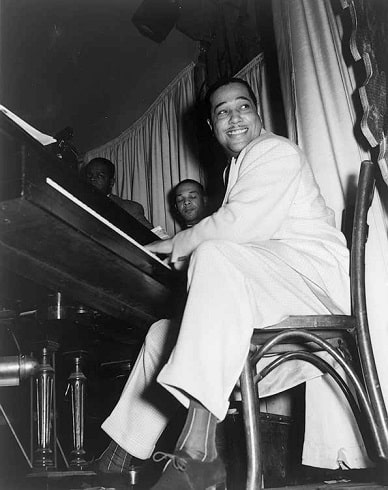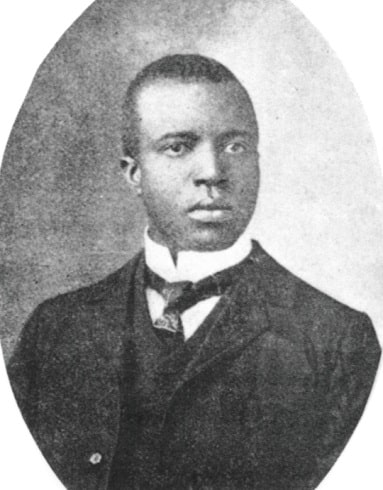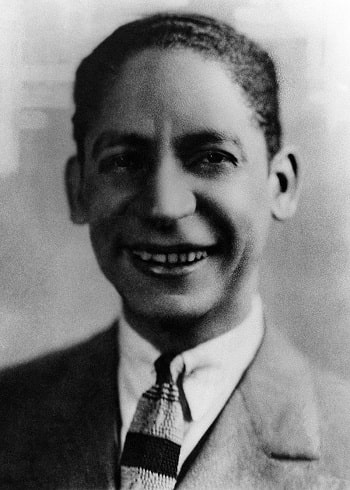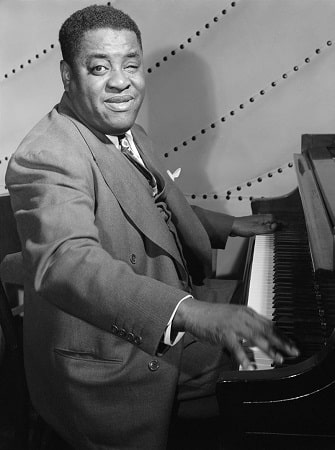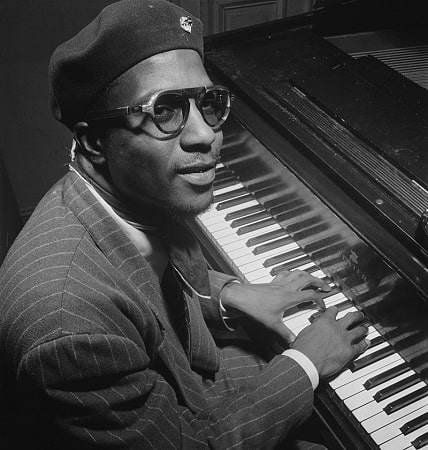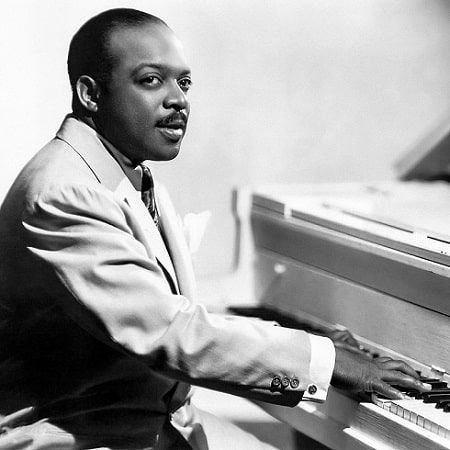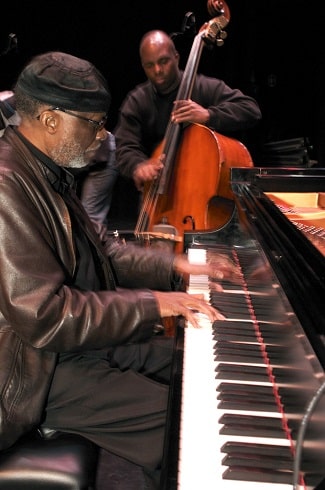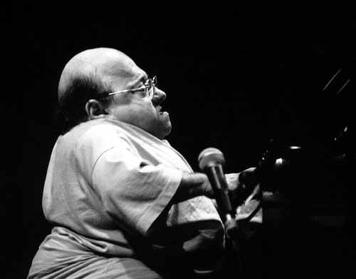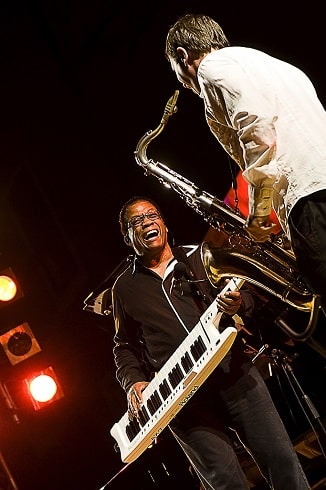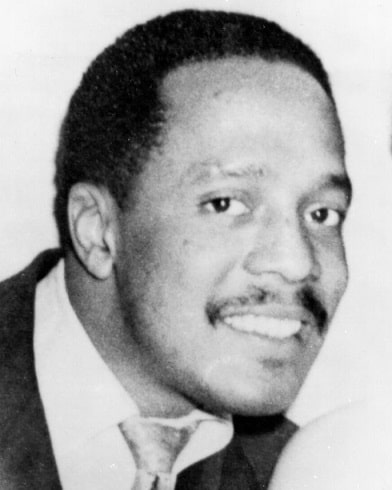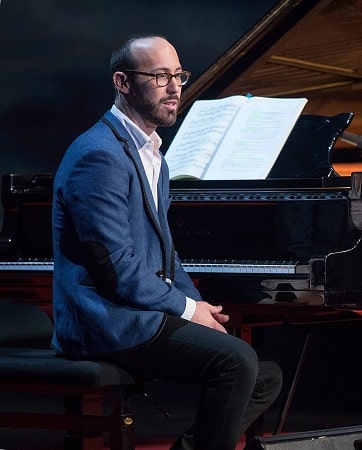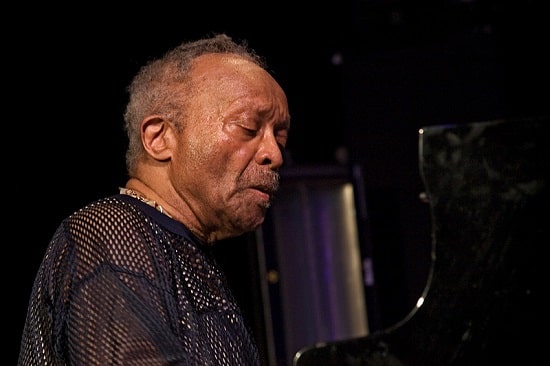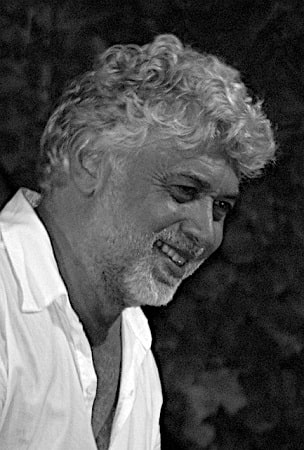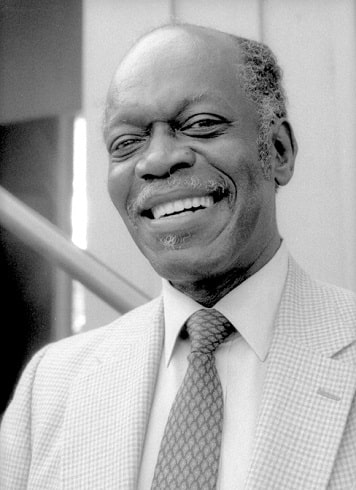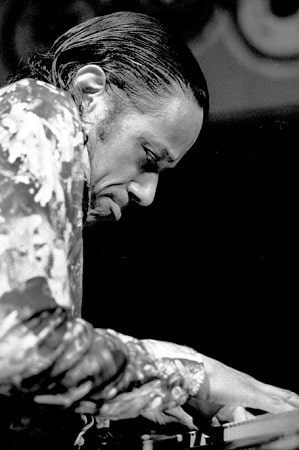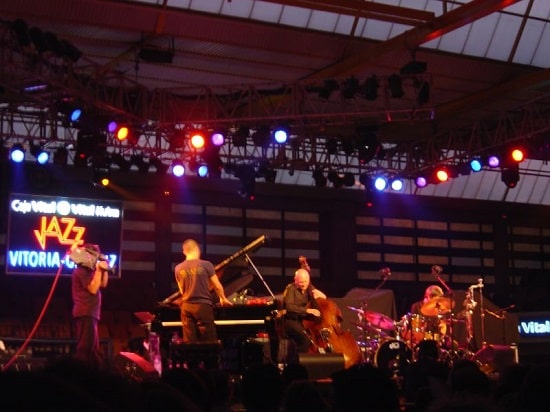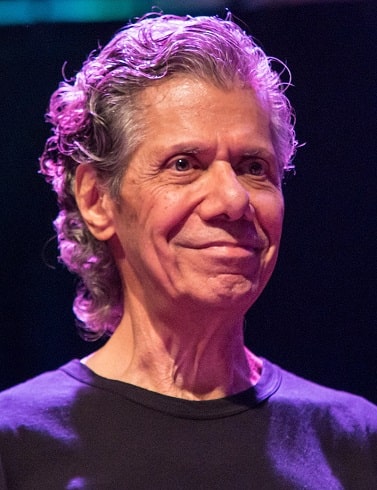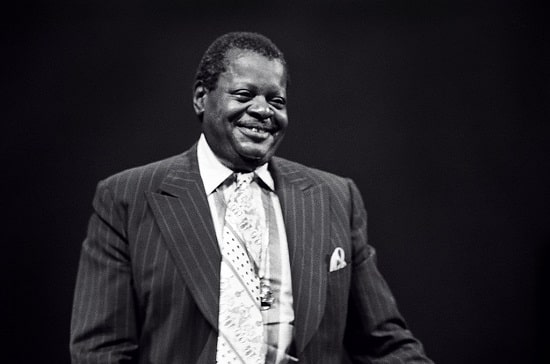The piano is essential in jazz as they build the groundwork for a great soloist or take the lead themselves.
From ragtime through bebop to avant-garde or even beyond, the jazz piano had played a critical part in establishing many of the distinct styles we recognize as jazz.
Here is our selection of the top jazz pianists of all periods; each significantly expanded the jazz genre.
We hope this article serves as a helpful reference point for you to discover further about these outstanding and influential jazz musicians.
A proficient jazz pianist improvises effectively and has rhythmic flexibility with appropriate embellishments on top.
Jazz pianists improvise in a variety of ways. Jazz improvisation is performing freely and improvising by redefining motives, phrases, and declarations to elevate the musical arrangement. Improvisation is a widespread misunderstanding that it has been developed out of thin air, but in reality, jazz performers had perfected constructing a very intricate theme and variation.
In general, it’s comparable. Based on which style and work (in both genres) you discuss, jazz are generally more developed rhythmically and melodically than classical. In contrast, classical is more evolved in terms of form.
25. Duke Ellington
Ellington as a child, grew up in Washington, D.C., in a secure middle-class home. His family supported his interest in music, and he began piano lessons at the age of seven.
He began performing professionally at 17 after being inspired by ragtime performers. Ellington was famous for his unusual “jungle” sound, characterized by growling muted brass and menacing harmonies.
He composed with his instrumentalists’ distinct sounds in mind. Ellington wrote fantastic combinations of work that included music for dancing, popular songs, large-scale concert works, musical theater, and film compositions.
“Mood Indigo,” “Satin Doll,” “Don’t Get Around Much Anymore,” and “Sophisticated Lady” are among his best-known pieces.
Ellington was one of the first jazz composers to break the 78-rpm record’s three-minute time limit. After the 1940s, he shifted his focus to longer pieces, including several suites (musical arrangements) constructed around a central theme, often an aspect of African American society.
Ellington mostly remained in the background on most of his early recordings, but from the 1950s, he emerged as a tremendously imaginative piano soloist.
Duke Ellington, a jazz musician, died of lung cancer on May 24, 1974, in New York City at the age of 67. On his seventieth birthday, President Richard Nixon bestowed the Medal of Freedom upon him.
24. Scott Joplin
Scott Joplin was a 20th-century American pianist and composer regarded as the “King of Ragtime.” His intricate bass rhythms, stop-time breakdowns, and harmonic concepts were widely copied.
In 1902, Joplin released his first prolonged composition, a ballet suite incorporating rhythmic ragtime elements and choreographic directions.
From 1899 until 1909, Joplin wrote ragtime masterpieces, including “Maple Leaf” and “The Entertainer.” Treemonisha, his opera, was presented on Broadway in 1972 and was incorporated in the film score for The Sting.
Ragtime is also seen as a foundation of jazz. Joplin fused Afro-American folk music and nineteenth-century European romanticism. His rags are highly pentatonic, with great blues notes and other noteworthy black folk music qualities.
Many jazz ensembles began to incorporate ragtime into their repertoire in the early 1940s. The Sting’s rendition of Joplin’s rag “The Entertainer,” performed by Marvin Hamlisch, peaked at number 3 on the Billboard Hot 100 musical chart.
Scott Joplin was a significant character in the evolution of ragtime music. His work paved the way for jazz, another uniquely American musical form.
He also paved the way for other black musicians and performers to prosper in a racially divided country. He received a special Bicentennial Special Award in 1976 for his contributions to American music.
23. Jelly Roll Morton
Jelly Roll Morton was an American pianist and lyricist who influenced the development of modern-day jazz in the 1920s. Jelly Roll Morton was a jazz genre pioneer. He is thought to have been the first jazz artist to write down his arrangements.
As a teenager, he traveled the country as a performer, vaudeville comic, and gambler. He was the leader of Jelly Roll Morton’s Red-Hot Peppers, a seven-piece band, in 1926.
In 1928, Morton relocated to New York, where he recorded songs such as “Kansas City Stomp” and “Tank Town Bump.”
Morton’s work was more formal than early Dixieland jazz, although his arrangements were just sketched out and left room for improvisation.
Louis Armstrong and other new innovators had overshadowed Morton’s prominence by the early 1930s. He remained loyal to his New Orleans background, releasing music that became increasingly out of date.
In the late 1930s, Morton was operating a jazz club in Washington, D.C., when he met folklorist, Alan Lomax.
Beginning in 1938, Lomax taped a series of interviews for the Library of Congress in which Morton provided an oral history of jazz’s roots and displayed early piano approaches. The recordings aided in reviving interest in Morton and his music.
Due to ill health, he could not make a proper comeback, and he died in 1941. In 1998, Morton was honored in the Rock & Roll Hall of Fame.
22. Art Tatum
In Toledo, Ohio, Arthur Tatum, an American pianist, was born on October 13, 1909, and died in Los Angeles, California, on November 5, 1956; he is considered one of jazz’s finest technical virtuosos.
At seven, Tatum began playing the violin and eventually moved to the piano at thirteen. Tatum, just at 16, started a professional career in the jazz idiom in 1927.
Tatum’s popular music harmonization became common among current jazz artists, horn players, and pianists. After Tatum, few jazz pianists attempted to integrate at least one classic Tatum run or embellishment into their performance.
Tatum worked for Decca in 1941 and 1943, and in 1943 he won Esquire’s first jazz popularity poll. Tatum’s quartet work constituted the entirety of his 1944 recordings.
During 1945, he made two radio appearances, attended only two recording sessions, and eventually worked in a trio style. Tatum signed with Capitol Records that same year and released numerous critically acclaimed songs.
Tatum joined with Norman Granz’s Clef/Verve label in 1953, and he recorded over 120 piano solos for them.
Art Tatum died on November 5, 1956. Tatum, a heavy beer drinker, had struggled with diabetes later in life for many years.
Benny Green: Tatum was the first jazz artist who could grasp the mannerisms of all schools and then blend them into something of his own.
21. Thelonious Monk
Thelonious Monk was born in Rocky Mount, North Carolina, on October 10, 1917. Monk began learning classical piano at the age of eleven.
By the age of thirteen, he had won the weekly amateur contest at the Apollo Theater many times that the management prohibited him from re-entering.
Monk was a crucial figure in the development of the bebop jazz school. Along with Charlie Parker and Dizzy Gillespie, he pioneered the rapid, jarring, and frequently improvised approaches to characterize modern jazz.
Monk marked a defining moment with his 1956 album, Brilliant Corners, widely regarded as his first great masterpiece.
Monk’s technique was percussive and minimalist, and he used complicated and discordant harmonies and irregular intervals and rhythms. He inspired several modern jazz musicians, including George Russell, Randy Weston, and Cecil Taylor.
Monk’s music was recognized for its light, almost playful tone. Many of his songs, mainly in the 12-bar blues or 32-bar ballad format, became jazz standards, including “Well, You Needn’t,” “Blue Monk,” and “Round Midnight.”
By 1962, Monk had become sufficiently well-known that he was offered a deal with Columbia Records, a far more commercial label than Riverside. Monk was one of four jazz musicians to behold the cover of Time Magazine in 1964.
20. Dave Brubeck
David Warren Brubeck (born December 6, 1920, in Concord, California, U.S.—died December 5, 2012, in Norwalk, Connecticut) was an American jazz musician.
Dave Brubeck was an American jazz pianist who included classical influences. He led a service band in Gen. George S. Patton’s army during World War 2.
Following the war, he attended Mills College in Oakland, California, where he studied composition under French composer Darius Milhaud.
He also learned with Arnold Schoenberg, the 12-tone system’s creator. Brubeck reflected his experiments in polyrhythms and polytonality in the group’s recordings (released in 1951).
Brubeck was a significant character in the West Coast jazz scene, which emerged relatively independently of New York’s bebop.
The band experimented with unusual meters for jazz at the time (for example, 5/4 or 9/8). Brubeck’s compositions reflected his classical upbringing through atonality, fugue, and counterpoint.
The quartet’s most significant commercial breakthrough came in 1960, with Desmond’s composition “Take Five.”
After the band disbanded in 1967, he led several small groups, including a quartet he created with his sons Darius (keyboards), Chris (bass and trombone), and Danny (drums) (drums).
Brubeck has produced a few solo piano albums, showcasing the extent of his harmonic insight on Albums such as One Alone (2000), a uniform standard that showcases Brubeck’s flexibility in a wide range of styles ranging from stride to contemporary.
In 2009, Brubeck was honored by the Kennedy Center for his efforts in American jazz.
19. Count Basie
Count Basie was born in New Jersey on August 21, 1904. William Basie’s father worked as a coachman and caregiver for an affluent New Jersey judge.
His mother was a pianist, and she was the one who gave him his initial piano lessons. Basie began exclusively playing the piano when he was 15 years old.
Count Basie began touring as a soloist, accompaniment, and music director in the 1920s. Count Basie was a pivotal player in developing the big-band style, which dominated popular music in the mid-twentieth century.
He was the first to use two “split” tenor saxophones, emphasizing the rhythm line, improvising with a huge band, and using arrangers to widen their sound.
Count Basie, the “King of Swing,” transformed the jazz landscape and affected mainstream music. In 1938, Basie’s 14-piece big band debuted at the Famous Door, a midtown nightclub.
Financial constraints caused Basie to disband the orchestra in 1950, but he reformed it for a new age.
Count Basie is one of the most influential bandleaders in jazz history and the only two men to have led an influential jazz band – along with Duke Ellington – during the 20th century.
Basie maintained his band until he died in 1984, having suffered from diabetes and severe arthritis in his final years.
18. Keith Jarrett
On May 8, 1945, Keith Jarrett was born. He was a jazz and classical music composer and pianist from the United States. Jarrett started studying the piano at three and gave his first solo performance at seven.
He toured as a piano soloist alongside Fred Waring’s Pennsylvanians and Art Blakey’s Jazz Messengers while still in his teens.
Jarrett rose to popularity in 1969, as he performed and recorded with Miles Davis. Although Jarrett detested electronic instruments, he was prepared to sacrifice to collaborate with Davis.
During the 1970s, Jarrett headed his band, including saxophonist Dewey Redman, bassist Charlie Haden, and drummer Paul Motian.
Jarrett’s 1975 New album, The Köln Concert, had become the best-selling piano album in history. His improvisations are inspired by jazz and other genres, including Western classical music, gospel, blues, and ethnic folk music.
By the 1980s, Jarrett’s public performances had shifted to classical recitals, including works by Johann Sebastian Bach, Domenico Scarlatti, Ludwig van Beethoven, George Frideric Handel, and Dmitry Shostakovich.
Jarrett was the first laureate of both contemporary and classical artist prizes when he got the Polar Music Prize in 2003.
He was nominated into the Down Beat Jazz Hall of Fame in 2008 as part of the magazine’s 73rd Annual Readers’ Poll. In February 2018, a second stroke left him essentially paralyzed and, therefore, unable to play with his left hand.
17. Ahmad Jamal
Ahmad Jamal (born Frederick Russell Jones on July 2, 1930) is a jazz pianist, composer, bandleader, and instructor from the United States.
He was one of the most exemplary influential small-group leaders in jazz over the past five decades. Ahmad Jamal was a child prodigy who started playing the piano at three.
He founded his first trio, The Three Strings, in 1951. Jamal’s “trademark” album lasted on the Ten Best-Selling Charts for an astonishing 108 weeks – an incredible feat for a jazz album!
Ahmad Jamal initially released Ahmad’s Blues on Okeh Records in 1951. His folk song Billy Boy and Poinciana (not his original work) reflects this period. He released his debut Argo (Chess) Records album, New Rhumba, in 1955.
Jamal was awarded the National Endowment for the Arts American Jazz Masters scholarship in 1994. Ahmad Jamal is a Steinway Artist only.
His most recent single, “It’s Magic,” published in June of 2008, debuted at #13 on the Billboard Hot 100. Jamal was inducted into the renowned Order of Arts and Letters by the French government in 2007.
William Faulkner, Ralph Waldo Emerson, Jackson Pollack, Ella Fitzgerald, Alan Ginsberg, and Tony Morrison are among those who have received the award.
16. Bill Evans
Bill Evans was born in Plainfield, New Jersey, on August 16, 1929, and died in New York on September 15, 1980. He was an American jazz pianist known for lush harmonies and lyrical improvisation.
Evans’ mother was his first piano teacher; he also studied violin and flute. Evans joined the service and played the flute in the Fifth Army Band.
In 1958, he collaborated with Miles Davis for an eight-month that proved significant. Evans’ approach to Miles Davis’ Kind of Blue (1959) impacted jazz pianists for many years.
Evans was regarded as the essential jazz pianist of his period, and he had a significant influence on subsequent musicians such as Herbie Hancock, Chick Corea, and Keith Jarrett.
Evans’s use of chord progressions and improvisational melodies gave his performance a romantic feel that contrasted with most 1950s bebop.
His production was hampered by heroin use in the 1960s, but he rehabilitated and began a career renaissance in 1971. He developed a cocaine addiction soon before his demise in 1980.
15. Michel Petrucciani
Michel Petrucciani was born in 1962 in Orange, France, with every bone in his body shattered. He had osteogenesis imperfecta, popularly known as “glass bone disease,” and never grew higher than 99cm.
He never attended school. He spent his whole youth in his room, playing jazz piano for 10 hours a day under the tutelage of his dictatorial father, a local musician and jazz lover.
By 13, he sounds like a 38-year-old black man stranded in a Mexican piano bar. On his 18th birthday, he rose and walked away with a friend he encouraged to carry him.
He ended himself in California, where he met jazz saxophonist Charles Lloyd. Petrucciani was the first European to sign with Blue Note Records, and he worked with Wayne Shorter, Jack DeJohnette, and others.
In 1989, he met the lady who would become his child’s mother, Alexandre, born with the same illness. He returned to France with his new family; it was there that he came to fame.
By this point, he was performing more than 200 gigs each year in front of thousands of people, and his physique was failing rapidly. He passed away in January 1999.
14. Herbie Hancock
Herbie, a young piano prodigy who played a Mozart piano concerto at 11, was born in Chicago in 1940. In his book, Miles Davis stated, “Herbie was indeed the step following Bud Powell and Thelonious Monk, and I’ve not heard anybody who has come after him.”
After leaving Davis, Herbie formed a new band named The Headhunters and released ‘Head Hunters’ in 1973. Its international hit single “Chameleon” pushed the album to platinum status, making it the first jazz record.
During the 1970s, Herbie had 11 albums on the popular charts. The 1970s influenced and provided samples for decades of hip-hop and dance-pop stars.
Herbie’s New album earned great reviews and was ranked in numerous critics’ top ten albums of the year. It also won three Grammy Awards, including Album of the Year, which Herbie is one of only a few jazz musicians to have received.
Herbie Hancock’s The Imagine Project, a critically acclaimed album, was published in 2010. It received two Grammy Awards in 2011 for Best Pop Collaboration and Best Improvised Jazz Solo.
Herbie Hancock was awarded Creative Chair For Jazz by the Los Angeles Philharmonic. Hancock is also the International Committee of Artists for Peace creator, and French Prime Minister Francois Fillon honored the prestigious “Commandeur des Arts et des Lettres.”
Hancock was chosen as UNESCO Goodwill Ambassador in July 2011 by UNESCO Director-General Irina Bokova. He astonishes audiences worldwide throughout a five-decade career and 14 Grammy Awards.
13. Bud Powell
Bud Powell (Earl Randolph Powell) was born in New York on September 27, 1924. Powell was one of the very few jazz players who helped pioneer bebop. He died of T.B. in 1966, at the age of 41.
Dale Turner’s character in Round Midnight was modeled from Powell’s life. His music can be found on the Blue Note and Verve labels.
Earl Randolph Powell was born in New York City on September 27, 1924. Powell rose to prominence as a critical role in bebop in the 1940s. He suffered from terrible headaches, convulsions, and erratic conduct in the 1940s.
Powell anticipated the hard bop style, which might arise later in the fifties during his 1949 sessions. In the 1950s, young white bohemians chose bebop as the motif of their “Beat generation.”
In the 1940s, black teenagers mostly ignored new jazz in favor of alternative genres such as doo-wop. Powell’s Modernists enlisted the services of numerous notable jazz musicians for their 1949 recordings.
The highlights are Charlie Parker, Dizzy Gillespie, Max Roach, and Charles Mingus. Powell became abusive and nasty against his fellow musicians in the late 1950s. Bud Powell maintained a high degree of artistry in his final years.
Bud in Paris, which was released about a decade following his death, depicts his fluctuating emotions. He had moments of brilliance, yet he occasionally lost steam, hardly keeping up with the song.
12. Yaron Herman
Yaron Herman is a French-born Israeli jazz pianist. At 16, he studied the piano with Opher Brayer, who taught him using a philosophy, mathematics, and psychology-based curriculum.
Yaron was named the Rimon School of Jazz and Contemporary Music’s “Junior Talent.” When he was 21, he collaborated with Sylvain Ghio to create his first album, “Takes 2 to Know 1,” on the Sketch label.
He began his music career at 21 and received widespread popularity. He was even dubbed the “Keith Jarrett of his generation” by some.
Herman’s album A Time for Everything debuted at the top of the French albums list in 2007. It includes both original material and renditions of current pop tunes by Björk and Britney Spears.
Yaron Herman’s style is influenced by jazz players and pianists like Keith Jarrett, Paul Bley, Lennie Tristano, Brad Mehldau, modern pop artists like Björk, Sting, and Olivia, and classical composers like Alexander Scriabin and Maurice Ravel.
11. Cecil Taylor
Cecil Taylor was an American jazz musician and composer born on March 25, 1929, in New York City and died on April 5, 2018, in New York City.
Cecil Taylor was among jazz’s most uncompromisingly accomplished pianists, with a nearly overpowering orchestral proficiency on the piano.
His style had expanded to include clusters and a thick rhythmic sensibility, as well as pure physicality, with him frequently approaching the piano with open palms, elbows, and forearms.
Taylor studied at the England Conservatory of Music and the New York College of Music. The jazz songs of Duke Ellington, Thelonious Monk, and Horace Silver had a more significant impact on him.
Taylor was among the first players to liberate jazz improvisation from the constraints of established harmonic systems.
He released dozens of albums and remained musically active far into the 80s. Despite being labeled a “New Star” by Down Beat magazine, Taylor struggled to find work during the duration of the late 1950s and early 1960s.
Cecil Taylor stated he always aimed to leave his audience breathless, a strategy he adopted after seeing Billie Holiday perform for the first time while he was 16 years old. The gardenia in her head, her white silk gloves, as well as the tone of her voice, captivated him.
10. Monty Alexander
Monty Alexander was born on June 6, 1944, in the Jamaican city of Kingston. Monty Alexander has established substantial success with a jazz piano style that incorporates a variety of influences.
He occasionally gets up from the piano bench to play the melodica or pluck the piano strings with his fingers.
Nat “King” Cole’s daughter Natalie collaborated with Alexander on the Grammy-winning Cole tribute album Unforgettable. Monty Alexander founded Monty, and the Cyclones had several Jamaican successes between 1958 and 1960.
His big break in the music business occurred when Frank Sinatra and Jilly Rizzo noticed him during a performance. Alexander collaborated with bassist Ray Brown and preferred the trio configuration for most of his career.
He refined his piano technique by studying virtuosos Oscar Peterson, Errol Garner, and Ahmad Jamal. In 1965, the pianist began his recording career with two albums on the Pacific Jazz label. He recorded for various labels, including M.P.S. in the mid the 1970s and Concord Jazz in the 1980s.
In the late 1970s, Alexander started experimenting with Caribbean music and jazz synthesis. Yard Movement, his first full-length album, was released in 1995 and included guitarist Ernest Ranglin. Stir It Up, released in 1999, was a jazz ode to reggae.
9. Nat King Cole
Nat King Cole was born Nathaniel Adams Cole on March 17, 1919, in Montgomery, Alabama, and died on February 15, 1965, in Santa Monica, California was an American musician who was regarded as among the best and most successful pianists small-group leader of the swing era.
He achieved his most tremendous mainstream success as a vocalist specializing in soft ballads and light swing. Cole’s tight, syncopated piano approach influenced jazz musicians such as Oscar Peterson.
The trio made numerous musical recordings and others showcasing their harmonizing vocals during the 1930s and early 1940s.
By the 1950s, he was virtually entirely working as a singer with orchestral accompaniment. Among his significant songs of the time were “Nature Boy,” “Mona Lisa,” “Too Young,” and “A Blossom Fell.”
The Nat King Cole Show, the first African American to headline a network variety show, began on N.B.C. television in 1956. However, his performance was discontinued after one season due to intolerance of the times.
During the late 1950s and early 1960s, Cole achieved considerable success with concert performances. He was a good performer and a calm and witty stage personality.
8. Hank Jones
Hank Jones was born in Vicksburg, Mississippi, in 1918 and moved to the Detroit area with his family when he was a toddler. He studied piano at a young age, paying close attention to Art Tatum, Teddy Wilson, Earl Hines, and Fats Waller.
Jones worked for Norman Granz’s labels, many of which he shared with Charlie Parker. He worked on shows such as The Ed Sullivan Show and remained with C.B.S. until the staff was disbanded in 1976.
In the early 1960s, pianist Charles Jones collaborated with Osie Johnson, Barry Galbraith, and Milt Hinton. He was also a Ron Carter and Tony Williams-founded Great Jazz Trio player of the Ron Carter and Tony Williams-founded Great Jazz Trio.
Jones remained with the group into the 1980s. Eddie Gomez and Al Foster later took his place. In the late 1970s, he was the pianist and music director for Ain’t Misbehavin’s Broadway musical.
Jones’ adaptability and sensitive approach have kept him very busy recording sessions and working in a diverse group and forms ranging from swing to bebop.
7. Horace Silver
Horace Silver (born September 2, 1928, in Norwalk, Connecticut, U.S. —died June 18, 2014, in New Rochelle, New York) was a demanding bop performer of the 1950s and 1960s.
The method expanded on bebop by incorporating blues, gospel, and Latin American music. “The Preacher,” “Senior Blues,” “Song for My Father,” “Sister Sadie,” and “Nica’s” are among Silver’s best-known pieces.
During the 1950s, Silver was featured on recordings with Stan Getz, Miles Davis, and Art Blakey, and he co-founded the Jazz Messengers, the most typical hard bop group of the day. Silver then went on to establish a string of great quintets.
Rather than having ensemble declarations exclusively at the beginning and conclusion of a piece, with the middle serving as a framework for improvised solos, Silver wrote ensemble portions within and between improvised solos.
The harmonies he developed for saxophone and trumpet, frequently fourths and fifths gave the quintet a more powerful sound than typical bebop quintets. Silver’s piano solos were both clear and musical.
He was not a fan of the conventional approach of improvising long, complicated lines of eighth notes, as exemplified by his primary influence (Bud Powell).
He also organized his music by using repeated accompaniment patterns rather than traditional “comping” (sporadic, syncopated bursts of chording that flexibly respond to the directions indicated by the improvising soloist). He also composed bass lines to accompany his left-hand piano parts.
6. Charles Mingus
Charles Mingus was a virtuoso bassist and a pianist, bandleader, and composer. In 1922, he was born on a military base in Nogales, Arizona, and raised in Watts, California.
Mingus was widely regarded as an important twentieth-century figure and, above all, a talented bassist, and he recorded several critically acclaimed albums. His musical approach and compositions were well-known.
Mingus’ often menacing demeanor, which earned him the moniker “The Angry Man of Jazz,” was almost as well-known as his groundbreaking music.
He collaborated with jazz performers during his three-decade career, including Louis Armstrong, Duke Ellington, Charlie Parker, Dizzy Gillespie, and Herbie Hancock.
He is widely considered the most outstanding jazz performer and composer of all time and a significant critic of collaborative improvisation.
Charles Mingus was a talented pianist as well as a brilliant bassist. Charles Mingus was a legendary figure in twentieth-century American music.
Charles Mingus composed and produced some of jazz’s most recognizable records. Impulse Records recorded and released The Black Saint and the Sinner Lady on January 20, 1963.
Mingus Ah Um was his first album created for Colombia Record, and it was released in October 1959. In 2013, the album was nominated for the Grammy Hall of Fame.
Most of Mingus’s music retained the hot and soulful feel of hard bop, drew heavily from black gospel music, and occasionally incorporated Third Stream Jazz elements. Mingus was also fascinated by film, and in 1959 he composed the majority of John Cassavetes’ bleak New York City film Shadows.
Charles Mingus died from a heart attack in Cuernavaca, Mexico, at the age of 56. He had amyotrophic lateral sclerosis for a year, also known as Lou Gehrig’s disease.
5. Randy Weston
Randolph E. Weston, also known as Randy Weston, was born on April 6, 1926, in Brooklyn, New York, and passed away in Brooklyn on September 1, 2018. He was a jazz pianist and composer from the United States known for his African rhythms.
He began learning to play the piano and served in the US Army before embarking on a jazz career at 23. He was always fascinated by African culture, and he first visited the continent to play in 1961 in Nigeria.
His approach was influenced by Thelonious Monk and Duke Ellington’s piano work. His repertoire was primarily composed of original music, although he also composed scores for larger jazz ensembles with orchestrator Melba Liston. His notable recordings included solo piano C.D.s by Ellington Monk in 1990.
The lively swing and strongly vocal melodies were Weston’s piano-style foundations. Long pauses and gaps in his phrases allow his rhythmic sections to be heard while emphasizing his powerful, blues-based harmonies.
Weston continued musically active far into his 80s, releasing The Storyteller, a live album recorded with the African Rhythms Sextet, in 2010.
4. John Lewis
In full John Aaron Lewis, John Lewis was born in La Grange, Illinois, on May 3, 1920, and died on March 29, 2001, in New York.
He was an American jazz pianist and composer-arranger who had been a vital part of the Modern Jazz Quartet, one of jazz’s most enduring and well-received ensembles.
He served in U.S. Army from 1942 until 1945. Following that, he performed as a pianist with Dizzy Gillespie’s big band, arranging “Two Bass Hit,” “Emanon,” “Minor Walk,” and his own “Toccata for Trumpet and Orchestra.”
Classical music influenced his restrained piano technique; he collaborated with Miles Davis, Charlie Parker, Lester Young, and others. “Django” is the most commonly performed Lewis’s composition by others.
Lewis wrote for non-jazz situations and composed music for films, ballets, and plays. Lewis was drawn to austerity and purity in his works, similar to his piano playing approach.
His compositions were centered on motifs and used few chord progressions. Lewis explored writing fugues and adding classical instrumentation to his compositions.
Lewis was also known for encouraging jazz among younger musicians. He was the musical director of the Monterey Jazz Festival in California from 1958 to 1982 and the American Jazz Orchestra from 1985 to 1992.
3. Esbjörn Svensson
Esbjörn Svensson was born on April 16, 1964, and died in a scuba diving incident in June 2008, 44. Svensson rose to prominence as one of Europe’s top accomplished jazz musicians just at the turn of the century.
At 16, Svensson enrolled in a music college and took piano instruction. He later spent four years studying at Stockholm’s Royal College of Music.
Svensson created the jazz ensemble E.S.T. in 1990, along with Magnus ström and Dan Berglund. The trio’s global breakthrough occurred in 1999, releasing their debut album outside of Scandinavia, From Gagarin’s Point of View.
The album Good Morning, Susie Soho (2000), and Strange Place for Snow (2002) attracted notice from audiences in the United States. They spent nine months touring Europe, the United States, and Japan in 2002.
E.S.T. was also the first European jazz trio featured in the American jazz publication Down Beat (May 2006 issue). Svensson collaborated with Nils Landgren, Lina Nyberg, and Viktoria Tolstoy on albums.
Svensson went missing while scuba diving in June 2008, and his dive partners discovered him unconscious on the seafloor; he died in that accident.
2. Chick Corea
Chick Corea, whose full name was Armando Anthony Corea, was born on June 12, 1941, in Chelsea, Massachusetts, and died on February 9, 2021. Corea was a classically educated jazz pianist, composer, and bandleader from the United States.
Chick Corea collaborated with Blue Mitchell, Willie Bobo, Cal Tjader, Herbie Mann, Stan Getz, and Miles Davis. During the 1970s, Corea led his Circle and Return to Forever ensemble.
His composition “Windows” had become jazz standard. He blended his light, joyful design with synthesizers and a variety of electric keyboard instruments, as well as rock and Spanish rhythms.
He continues to broaden his musical collaborations in the twenty-first century, working with banjo maestro Béla Fleck and enlisting Bobby McFerrin to offer scat accompaniment to Corea classics.
Corea received his 20th Grammy Award for Hot House (the 1970s). Antidote (2019), a song he composed with his Spanish Heart Band, earned him another Grammy.
1. Oscar Peterson
Oscar Peterson, full name Oscar Emmanuel Peterson, was born on August 15, 1925, in Montreal, Quebec, Canada, and died on December 23, 2007, in Mississauga, Ontario). He was such a pianist who was well-known for his spectacular solo skills.
Peterson traveled to the United States in 1949, where he performed at one of the jazz organizers, Norman Granz’s performance at Carnegie Hall in New York City.
For most of his career, he was linked with Granz, traveling the world with Granz’s all-star jazz at the Philharmonic group and recording prevalently for Granz’s record companies.
His duo records from 1974–75 with trumpeters Dizzy Gillespie, Roy Eldridge, Harry Edison, Clark Terry, and Jon Faddis exemplified his generous warmth and compassion.
His recordings were nominated for eight Grammy Awards. In 1999, he was awarded the Praemium Imperiale Award for music by the Japan Art Association. Art Tatum and Nat King Cole heavily influenced Peterson’s approach.
Peterson continued to play until 2006, though his public performances grew more infrequent following a stroke in 1993. Oscar Peterson’s autobiography, A Jazz Odyssey: The Life of Oscar Peterson, was released in 2002.
How do jazz pianists develop their skills?
The pianist is a composer as well as an arranger. They should improvise, harmonize melodies, transpose quickly, and compose accompaniments in various styles.
Jazz pianists practice multiple scales, modes, and technical drills with a jazz feel (swing). The piano can produce an infinite number of harmonic variations. Developing harmony is an essential element of a jazz pianist’s technique.
Building melodies, practicing chord scales, and learning chord-scale correlations are common starting points for practice.
Top contemporary jazz pianists
All of the jazz piano players mentioned are outstanding artists who deserve recognition. Their musicianship will make you evaluate jazz in new and intriguing ways. Aside from these musicians, a few contemporary jazz spirits are as follow:
- Cory Henry
- George Duke
- Justin Stanton
- Jacob Collier
- Russell Ferrante
- Jason Moran
Jason Moran’s jazz piano teachers: Jaki Byard
Jaki Byard was the most versatile pianist in jazz, though he also played trumpet and tenor saxophone.
Born in 1922, he lived during the golden age of jazz, and while being younger than Duke Ellington, he welcomed all of the changes in the genre.
Byard’s style developed from his early days playing with Earl Bostic in the late ’40s and early ’50s.
Byard became a music educator in the early ’70s, teaching at Harvard, the Hart School of Music, and the New England Conservatory.
He recorded and performed the world intermittently until his death from a gunshot wound in 1999.

